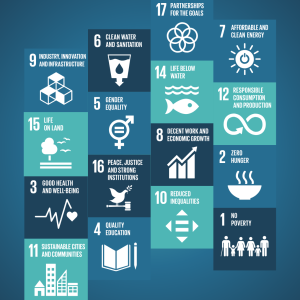Indicators in this domain assess the extent to which migrants have the same status as citizens in terms of access to basic social services such as health, education, and social security. It also describes the rights of migrants to family reunification, to work, and to residency and citizenship. The ratification of the main international conventions is also included within this domain.
Indicators in this category look at the extent to which migrants have access to certain social services such as health, education and social security. They also examine measures to ensure integration and access to work.
Indicators in this domain assess countries’ institutional, legal, and regulatory frameworks related to migration policies. Domain 2 also reviews the existence of national migration strategies that are in-line with development, as well as institutional transparency and coherence in relation to migration management. This domain also investigates the extent to which governments collect and use migration data.
Indicators in this category assess the institutional frameworks of cities for migration. This area also examines the existence of migration strategies consistent with development objectives, as well as institutional transparency and coherence in migration management.
This domain focuses on countries’ efforts to cooperate on migration-related issues with other states and with relevant non-governmental actors, including civil society organizations and the private sector. Cooperation can lead to improvements in governance by aligning and raising standards, increasing dialogue and providing structures to overcome challenges.
Indicators in this category focus on cities’ efforts to cooperate on migration issues with the national government as well as other cities and relevant non-governmental actors, including civil society organizations and the private sector.
This domain includes indicators on countries’ policies for managing the socioeconomic well-being of migrants, through aspects such as the recognition of migrants’ educational and professional qualifications, provisions regulating student migration and the existence of bilateral labour agreements between countries. Indicators equally focus on policies and strategies related to diaspora engagement and migrant remittances.
Indicators in this category assess cities’ initiatives in terms of international student mobility, access to the labour market and decent working conditions for migrant workers. Aspects related to diaspora engagement and migrant remittances are also included in this domain.
This domain studies the type and level of preparedness of countries when they are faced with mobility dimensions of crises, linked to either disasters, the environment and/or conflict. The questions are used to identify the processes in place for nationals and non-nationals both during and after disasters, including whether humanitarian assistance is equally available to migrants as it is to citizens.
Indicators in this category examine the type and level of readiness of cities to deal with aspects of mobility crises. The questions focus on the processes in place for citizens and non-citizens both during and after disasters, especially if humanitarian assistance is available for migrants and citizens.
This domain analyses countries’ approach to migration management in terms of border control and enforcement policies, admission criteria for migrants, preparedness and resilience in the case of significant and unexpected migration flows, as well as the fight against trafficking in human beings and smuggling of migrants. It also assesses efforts and incentives to help integrate returning citizens.
Indicators in this category look at the cities’ approaches to migrant safety as well as return and reintegration policies and the fight against trafficking in persons.
This country Profile describes examples of well-developed areas of the Republic of Zimbabwe (hereafter referred to as Zimbabwe) migration governance structures and areas with potential for further development, as evaluated through the six domains of the Migration Governance Indicators (MGI). These address migrants’ rights, a “whole-of-government” approach, partnerships, socioeconomic well-being of migrants, the mobility dimensions of crises, and safe and orderly migration.
Click the icons on the wheel to explore the key findings.
The Migration Governance Indicators (MGI) initiative is a policy-benchmarking programme led by the International Organization for Migration (IOM) and implemented with research and analysis from the Economist Intelligence Unit. Funding is provided by IOM Member States.
Migration Governance: examples of well-developed areas
- Permanent residents, migrant children and migrants above the age of 70 have the same access as citizens to Government-funded health services.
- Migrant workers employed in Zimbabwe have equal access to social security benefits as nationals.
- Zimbabwe has various legislative documents and measures to prevent discrimination, which are also applicable to migrants.
Areas with potential for further development
- Zimbabwe does not have agreements with other countries on the portability of social security entitlement and earned benefits.
- Only citizens on official government foreign service and their spouses may vote in national elections if they live abroad.
Migration Governance: examples of well-developed areas
- The Inter-Ministerial Committee on Migration ensures coherence and coordination of migration policies of relevant ministries.
- The Zimbabwe Diaspora Directorate consolidates statistics on diaspora activities through its National Diaspora Taskforce.
- The National Labour Migration Policy aims to empower and protect migrant workers against abuse and exploitation.
- Zimbabwe collects and publishes migration data on a regular basis.
Areas with potential for further development
- Migration-related laws, policies and frameworks that address migration and human mobility issues are not always aligned.
- The National Development Strategy 1 (2021–2025) does not address migration in detail.
Migration Governance: examples of well-developed areas
- Zimbabwe participates in the Migration Dialogue for Southern Africa and the Migration Dialogue from the Common Market for Eastern and Southern Africa Member States
- Zimbabwe has signed memorandums of understanding related to migration with other countries, including with South Africa and Botswana on labour and employment.
- The Diaspora Directorate regularly engages with its diaspora on migration policy issues.
Areas with potential for further development
- Zimbabwe engages civil society organizations in agenda-setting and the tackling of migration-related issues only on an informal and ad hoc basis.
- There are no formal measures to engage the private sector, academia and local authorities on migration-related policy formulation and implementation.
Migration Governance: examples of well-developed areas
- Through its Labour Act, Zimbabwe established several measures to protect all workers, including migrant workers, against exploitation.
- The Zimbabwe National Qualifications Framework allows for portability and comparability of qualifications in line with the Southern African Development Community Qualifications Framework.
- Zimbabwe has taken measures to reduce the costs of remittances through the Authorised Dealers with Limited Authority framework.
Areas with potential for further development
- The Government of Zimbabwe monitors the domestic labour supply and the impact of emigration on the domestic labour market, but only on an ad hoc basis.
- International students pay higher fees than citizens of Zimbabwe and nationals of the Southern African Development Community countries.
Migration Governance: examples of well-developed areas
- There are early-warning communication systems and two-way communication mechanisms during disasters, available in local languages and English.
- The Department of Civil Protection’s annual Humanitarian Response Plan addresses the needs of all people requiring assistance, including those affected by disasters.
- Zimbabwe has measures to make exceptions to immigration procedures for non-nationals whose countries of origin are experiencing crises.
Areas with potential for further development
- Neither the National Climate Change Response Strategy nor the Nationally Determined Contribution address climate-related migratory movements.
- There are no specific laws or policies in place to address displacements due to disasters.
Migration Governance: examples of well-developed areas
- The Department of Immigration has a memorandum of understanding on immigration cooperation with countries within the Southern African Development Community region.
- The National Referral Mechanism for Vulnerable Migrants clearly defines roles for each stakeholder involved in the identification, referral, assistance, repatriation and monitoring of victims of trafficking.
- The Constitution of Zimbabwe provides protection for all against forced labour.
Areas with potential for further development
- Apart from basic induction training on migration management, immigration officers are not regularly trained on migration-related issues.
- Zimbabwe does not have a policy or strategy to ensure that migrant detention is used only as a measure of last resort.


